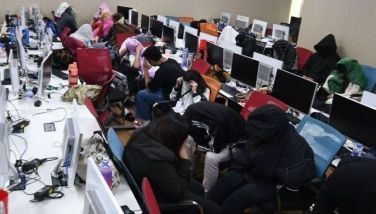Number of poor families up by 10.5% last year – NSCB
MANILA, Philippines - The number of poor families has increased by 10.5 percent to 4.2 million in 2012 from 4.04 million in 2009, the National Statistical Coordination Board (NSCB) bared in a press briefing yesterday.
Filipinos classified as extremely poor increased to 1.6 million last year, compared to 1.55 million in 2011.
In other words, one out of every five families was classified as poor last year, according to NSCB secretary-general Jose Ramon Albert.
The number of poor families will also likely increase by another million due to the devastation caused by typhoons and other natural catastrophes and man-made disasters such as the Zamboanga siege in the second semester.
The National Economic and Development Authority (NEDA) said that a study by the Asian Development Bank (ADB) indicates that typhoons in the magnitude of Typhoon Yolanda could increase the number of poor by 1.5 percentage points on the previous poverty count.
In 2012, the three most devastating natural catastrophes were the Negros Oriental earthquake, the monsoon rains and Typhoon Pablo. These calamities accounted for damage worth more than P40 billion.
Albert said that the proportion of poor families improved to 19.7 percent of the population in 2012.
“The proportion of poor families has significantly gone down from the 29.7 percent estimated poverty incidence in 1991. The estimate for 2012 is slightly lower than the 2009 and 2006 poverty incidence figures, which were estimated at 20.5 and 21.0 percent, respectively, but these differences are not statistically significant,†he said.
For the 2013 estimates, that means a return to the 20-percent level of poverty incidence assuming the ADB estimation. That would erase the economic growth momentum gained in the past two years of between five to seven percent.
The NEDA said that natural disasters have the power to negate gains in economic growth and development.
Disasters have profound effects on local economies and recovery usually takes a long time. These signal the need for an urgent and deliberate focus on disaster risk reduction and mitigation for these areas, coupled with social insurance protection and income diversification.
The NSCB report also said that in 2012, a Filipino family of five needed P5,513 to meet basic food needs every month and P7,890 to stay above the poverty threshold (basic food and non-food needs) every month.
The amounts represent the food and poverty thresholds, which increased by 12.4 percent from 2009 to 2012. The increases can be attributed to inflation of about 4.1 percent on the average per year between 2009 and 2012.
NEDA assistant director general for planning Rosemarie Edillon admitted that the NSCB report clearly shows “a very slow decline in poverty incidence†in the periods in question. – With Delon Porcalla, Rainier Allan Ronda
- Latest
- Trending





























